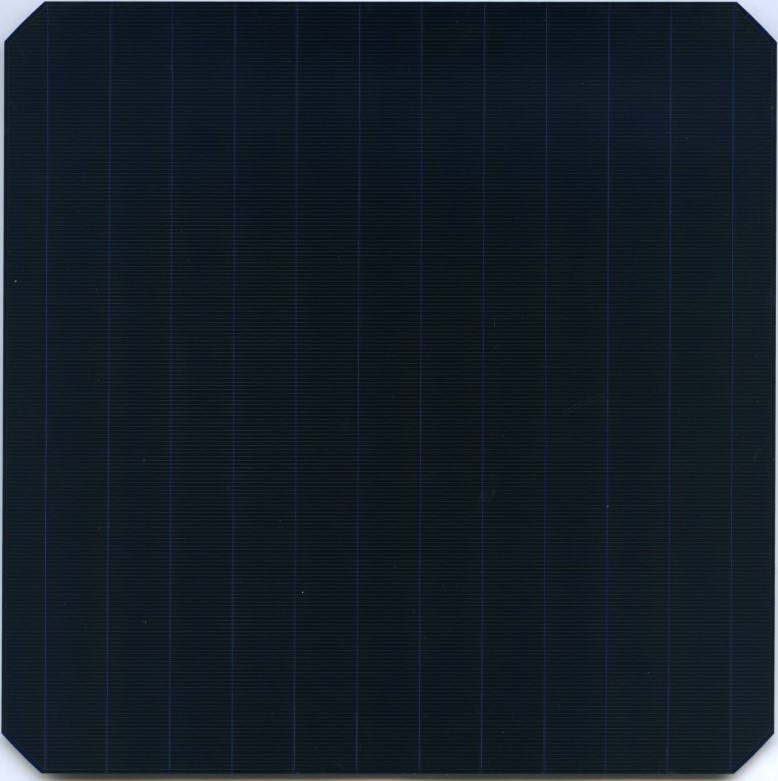Sundrive revealed in September 2021 that it had achieved a record-breaking power conversion efficiency of 25.54% for a silver-free heterojunction solar cell. Now, in a new paper that was recently published in Progress in Photovoltaics, scientists from Sundrive and Maxwell describe the technological innovations that made this possible.
At the time, the Australian startup said that the results, which were certified by Germany's Institute for Solar Energy Research (ISFH), represented the highest efficiency ever recorded for a commercial-size silicon heterojunction (HJT) solar cell. It noted that it used large-scale production processes provided by China-based equipment manufacturer Maxwell Technologies.
“In this paper, we shared some of our recent advances about HIT solar cells, including the use of indium oxide doped with transition metal elements (IMO), that of hydrogenated nanocrystalline silicon oxide (nc-SiOx:H) films and copperd (Cu) plating,” researcher Cao Yu told pv magazine. “IMO and nc-SiOx:H films have already been used in our customer's production line, while Cu plating has not.”
The researchers said the IMO films used for the solar cell have a larger bandgap, higher carrier mobility and lower carrier concentration than common indium tin oxide (ITO) films. They used IMO films with an optical bandgap of about 3.88 eV and high mobility of up to 83.2 cm2/V per second to build TCO thin films that they then deposited in the cell by using direct current (DC) magnetron sputtering method at room temperature.
The research group used the nc-SiOx:H films, which have a low absorption coefficient, to improve the cell's short-circuit density. They deposited these films through very high frequency (VHF) excited plasma-enhanced chemical vapor deposition (PECVD). “VHF-PECVD can be used to efficiently fabricate nc-SiOx :H layers with thickness of about 20 nm while maintaining high passivation quality in industrial mass production,” they said.
For the Cu plating, the academics said that they formed the surface Cu finger-busbar grids by using Sundrive Solar's proprietary metallization process. The latter includes a mask forming step and the horizontal plating of the metal grid from an acid Cu plating electrolyte. They added that the width of the finger openings in the formed mask was about 20 μm.
For the fabrication of the solar cell, with an area of 274.5 cm2, the scientists used an n-type Czochralski (CZ) silicon wafer provided by Chinese manufacturer Longi. The wafers have a thickness of 150 μm and resistivity of 1 Ωcm. They used a wet-chemical process wafer treatment including removing of saw-damage, texturing, and cleaning.
“Approximately, 16 nm nc-SiOx:H(n) (or 6 nm a-Si:H(n)) and 8 nm a-Si:H(p) layers were deposited as carrier selective layers on front and rear surfaces, respectively,” they said. “After that, about 80 nm TCO films were sputtered on both wafer surfaces. Finally, metal finger grid contacts (Ag paste or plated Cu) were patterned on each of the surfaces.”
Measured under standard illumination condition, the cell not only showed the above-mentioned record efficiency but also a remarkable short-circuit current of 40.24 mA per square centimeter.
“These results demonstrate the feasibility of high efficiency, and most importantly, low-cost and sustainable mass production of SHJ solar cells,” the research group said.
Yu noted that the the production costs of HIT solar modules are very close to those of PERC modules.
“That means the production cost of HIT cells is a little bit higher than that of PERC cells,” Yu added. “But I think there is still a lot more to do to further reduce the cost of HIT solar cells.”
More recently, Sundrive said it had achieved an efficiency result of 26.41% on a full-size silicon heterojunction (HJT) solar cell featuring its copper-based technology. It said the improvement of the HJT cell, with a total area of 274.3 square centimeters (M6 size), had been observed in all three key performance parameters, including open-circuit voltage (Voc), short circuit current (Isc) and fill factor (FF).
This content is protected by copyright and may not be reused. If you want to cooperate with us and would like to reuse some of our content, please contact: editors@pv-magazine.com.




2 comments
By submitting this form you agree to pv magazine using your data for the purposes of publishing your comment.
Your personal data will only be disclosed or otherwise transmitted to third parties for the purposes of spam filtering or if this is necessary for technical maintenance of the website. Any other transfer to third parties will not take place unless this is justified on the basis of applicable data protection regulations or if pv magazine is legally obliged to do so.
You may revoke this consent at any time with effect for the future, in which case your personal data will be deleted immediately. Otherwise, your data will be deleted if pv magazine has processed your request or the purpose of data storage is fulfilled.
Further information on data privacy can be found in our Data Protection Policy.